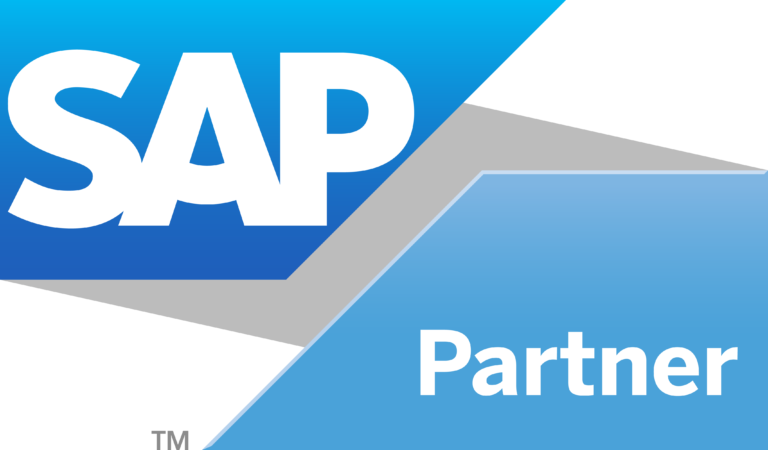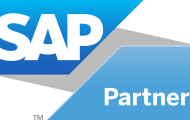SAP ERP Post go-live optimization
If you’ve committed to SAP to help improve your whole-of-business process management, keep investing in your solution across these three areas to deliver value:
Maintenance and support: A pro-active SAP partner like TechPoint will be able to show you substantial returns on investment from your annual maintenance and support fees. So the team at TechPoint offers customer maintenance and support focus on providing value and constant improvement for customers.
Increase user satisfaction with unlimited support desk/help desk assistance to make sure support queries are answered in a timely and constructive way to maximize the user experience and build confidence in support outcomes.
Reduce the time it takes to complete tasks and improve user engagement with free user training. Web-based user training to ensure that your SAP users are maximizing their use of SAP ERP
Once you have implemented a powerful ERP solution like SAP ECC or S/4HANA, it’s important to proactively maintain and enhance the solution to further scale your returns. SAP S/4HANA One provides a fantastic platform for growth – a foundation solution that operates across your business (Simple Finance, logistics, FIORI Apps & dashboards for management) and is ready for the next wave of business benefits delivered through IOT, machine learning and digital transformation.
Hence automate your business – take advantage of new technologies by upgrading to the latest version of SAP i.e. S/4 HANA
Complementary solutions: As your business grows or you’re ready to digitize and transform more aspects of your business. You can accomplish a great deal by integrating applications with SAP ERP such as.
E-commerce: open up new sales channels and attract new customers with integrated e-commerce. Reduce timelines for sales, payment and delivery process to improve customer satisfaction with fully integrated SAP S/4HANA.
EDI: reduce processing time, errors and effort with EDI integration to/from your major suppliers and customers.
Accounts Payable automation: reduce processing time so that team members can focus on more strategic, value add tasks. Therefore use OCR technology to scan, approve and automate the AP process.
Inventory forecasting: Improve customer service and cash flow by ensuring that your business holds perfect inventory levels. Integrated inventory forecasting solutions further enhance standard SAP
Freight management integration: reduce freight costs and ensure quicker delivery times with a fully integrated freight management portal.
Expense management: reduce the time it takes to process expense claims and ensure legal with integrated SAP solutions.
Business intelligence and analytics: better decision making starts with access to accurate and timely data. Reduce time to produce information for decision making with SAP in-memory database technology
(HANA) and integrated Business Intelligence. Hence, Better access to data = better decision making.

Training and configuration: Training is the need as the solution’s capabilities evolve and you grow your business with new employees. So, Skilling, your team will make them more effective in their roles and contribute to higher levels of job satisfaction.
From the TechPoint industry and SAP experience, having led many successful ERP implementation projects, a high percentage of customers have further enhanced their use of SAP S/4HANA with configuration and customization of the end solution for specific requirements, industries, and compliance.
Therefore this requirement varies from ensuring that SAP S/4HANA is seamlessly integrated with an existing application, or add-on, to writing code to build-out the solution to meet a niche requirement. So sometimes these developments are relatively small but they produce major business benefits.
Go-live is by far the most exciting milestone in the implementation of new business software, especially an SAP ERP system as the solution impacts nearly every department in your organization. But a company’s transition to new business software does not end with go-live. It’s important to also address post-go-live actions to guarantee successful adoption and effective utilization of your new software.
In many instances, the overall effectiveness of an ERP system starts to slowly diminish immediately the following go-live. Workflows change, people change, business strategy changes and the system does not keep up. Sometimes significant parts of the ERP system were never implemented, insufficiently integrated or poorly architected. Perhaps the company was led astray with poor advice from their technology partner. The result, in all these cases, is a weaker system that does not deliver the value expected or required to improve company performance.
Because of the social impact that implementing SAP ERP has on an organization, thoughtful change management is essential. Successful adoption flows from the top down. Industry experts agree: bringing key users on-board early in the implementation is an important step that should not be overlooked or downplayed. But system adoption will continue beyond go-live. In fact, some of the biggest challenges that users will face start once the trigger is pulled on your new SAP ERP. Effective change management smooths the transition from old ways to new by providing:
- Training and support: With the right level of training and support, employees can effectively master the new technology and business processes. Knowledge is the key to empowerment, and training exponentially increases broad-based support of new SAP ERP software. Take advantage of opportunities to discuss with users what their needs are for additional training.
- Measuring and communicating benefits and value helps encourage the adoption of new processes. Misconceptions must also be addressed. Don’t let employees blame the adoption of a new SAP system when the real issue may be their own resistance to changing rules and limits. If limits were set by management to prevent business risk and increase efficiency, then the purpose and value of those limitations must be explained to help build understanding and acceptance.
- Alignment to new business processes: Existing policy and procedures will need to be reviewed so that they enable rather than hinder newly established workflows.
- System Monitoring and Enhancement: Risk is substantially lowered at go-live when strong audit procedures are incorporated. During go-live, monitor the flow of data and how your system scales up. Have your team regularly generate and review reports in the ERP to help assess progress. With employees now using the system, any hidden issues can be shaken out and addressed.
- Your plan should also include an ongoing process to review functionality so as to increase your ROI. ERP systems are complex. Keep current with product updates and new features, and continue to delve deeper into discovering the wealth of functionality your system provides.
- Support Center Tickets: No matter how much planning and preparation you’ve done to equip your end-users and systems for the conversion, there will undoubtedly be a number of service tickets that are already piling up. Users may be frustrated and overly stressed and want a resolution immediately. Whether you are triaging issues through a command center or having users open help desk/service tickets, be prepared to prioritize the issues by level of urgency. One easy way to assign a priority level to raised issues is to understand how it is or isn’t affecting patient care. Issues immediately affecting care should be marked as critical and resolved first. Once the critical tickets are addressed you can work your way through the lower priority levels.
- Simultaneously, use a method of communication (e-mail is typically easiest) to keep your organization apprised of the status of your work. The more transparent you are to staff regarding things such as the number of tickets you have received, how many you have resolved, etc., the more trust and confidence you will build as it lets users know your progress toward resolutions and they will receive the help they need.
- Security Access Discrepancies: One of the most challenging aspects of an SAP implementation is security access. With a system such as Epic, for example, each user is given unique security access based on their role and the corresponding application training they completed. No matter how much work you did to ensure correct access was being assigned, once you are live, some end users will undoubtedly have been given incorrect security access. To mitigate these challenges, have plenty of at-the-elbow support available immediately following the go-live that can perform training checks to verify if the user completed training. You will find that you are able to appropriately adjust many users’ access and get them live in the system in minutes.
- The most challenging security issues you will face is when a user has been given the correct security access based on the training they completed, but it, unfortunately, is not the access they need to perform their role because they took incorrect training. You will have to work through some difficult conversations with their manager to identify what the correct training is and have the user attend training once again before they can get their correct access. To ease any tensions and be as efficient as possible, see if you can assign them a view-only access level that will allow them to perform some of their work until they can get into training again.
- Training: While most of your time and energy is spent on getting users training before the conversion date, you will also need to be prepared to plan for training after you are live in the system. The training needs for the immediate days/weeks after you are live and the long-term plan for training vary quite significantly:
- Short-Term Training Post Go Live: Immediately following the conversion, it is important to have open channels of communication with the training team and the at-the-elbow support teams. The training team will need to know the critical training needs so they can get classes and certified trainers organized for users who completed incorrect training or need supplemental training as soon as possible. Additionally, you should build a moderate training schedule for the first three weeks after the conversion that is available for users to register prior to the go-live. This will help eliminate any time lost after go-live creating class schedules and reassure end users that they can receive additional training as needed.
- Long-Term Training Post Go Live: Application training will need to be offered endlessly as new hires, rotating residents, interns, transfers and other staff will all need to be trained. To manage this training, it might make sense for your organization to create a set monthly training schedule. A set schedule will help eliminate any new hires being unable to perform job roles because they haven’t been able to take training yet. To create a set schedule, first speak with practice managers, resident coordinators, and others to get anticipated start dates and general monthly hiring times. It is likely that they already have a general year-long hiring plan. Working directly with managers will give them a better understanding of what the training team can accommodate and you can set realistic schedules that both parties can agree on.
- Ongoing Communication: One of the most important things you can do after conversion is to keep both staff and managers updated. Most likely, managers will have been focused on just getting through the go-live and probably have not yet thought about what the conversion means for their practice in the long run. As processes for training, security access, and command center help desk tickets change in the days and weeks following the conversion, it is important to keep managers updated on these changes. Anytime a change is made it must be communicated to them. The earlier you can communicate and the more transparent you are will lead to the greatest point of stabilization in the new system.
- The complexity of an SAP implementation often means post-go-live planning is put on the backburner. However, if you have an understanding of these challenges you will encounter after you are live, you will be better equipped to guide your organization to system optimization.



